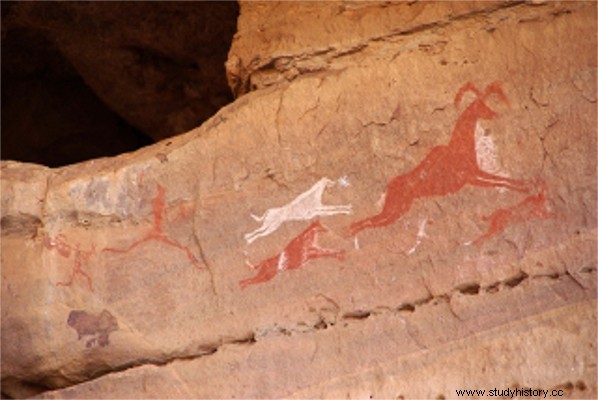
By Me. Tales Pinro
Several species of the genus homo evolved over millions of years until the arrival of the species homo sapiens , which scientists say we contemporary humans are a part of.
Many of these scientists claim that adopting a diet also based on animal protein would have contributed to the evolution of human beings and that this adoption would have taken place over a long time, resulting in the creation of various abilities to obtain this type of food.
During the so-called Paleolithic period, a time division that spanned about two million years, until about 10,000 years ago, humans still lived by gathering fruit, roots and other plant species, but began to develop the habit of feeding on animal protein, resulting from hunting, fishing and shellfish collection, but also from the use of animal carcasses left by other carnivores.
For paleoanthropologist Henry Bunn of the University of Wisconsin-Madison, the ability to obtain meat and how to tear up the carcass of animals changed during the Paleolithic. He divided it intothree steps the process.
First , the so-called hominids cut meat from the bones of animal carcasses, using some tools made of stone or stone chips. This first period would have occurred between 2.6 and 2.5 million years ago, still indicating a small capacity of hominids to obtain food with animal protein.
A second moment would be characterized by a more common procedure of handling the meat to be ingested, in addition to developing the ability to break bones to also feed on the marrow inside and carry the carcasses of animals to different places from where they had been found or slaughtered. At this stage, between 2.3 and 1.9 million years ago, hominids still appropriated prey carcasses from other carnivores, but they were also able to obtain prey of their own.
The third stage this “carnivorous” evolution of Paleolithic hominids would be characterized by the extensive flap of animal remains, obtaining intact carcasses, resulting from new skills of appropriating prey from other carnivores or even resulting from the practice of hunting, which became routine. The dating of this last phase is estimated to be between 1.8 and 1.6 million years ago and demonstrates that, in addition to hunting, hominids of the period acted in obtaining hunting parts from other carnivorous mammals.
For another expert, paleontologist Lars Werdelin, this development of the ability to obtain meat by hominids would have caused a decrease in the number of carnivorous species in East Africa, having possibly eliminated many large animal species. The entry of hominids in the carnivorous food chain, added to climate change, would have, in this way, drastically changed the ecosystem of this African region.
